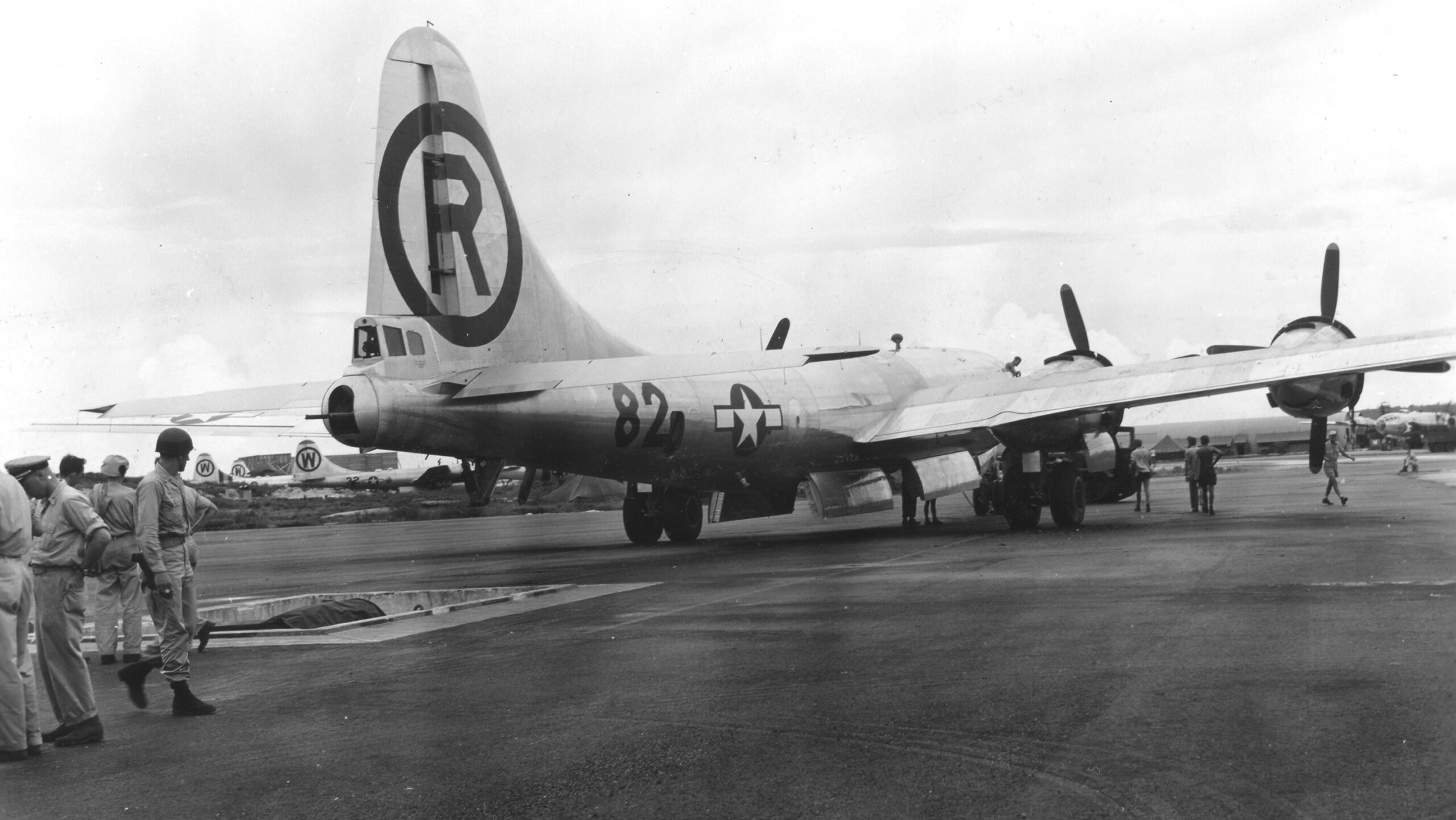

More than seven decades ago, the planes that dropped two atomic bombs on Japan took off from a small airfield on the Pacific island of Tinian in the Marianas. They were just two bombing missions among many that launched from that airfield. Then only two years later it was largely abandoned.
Now the U.S. military is quite literally clawing it back from nature.
The North Field, or Tinian North airfield as it is also called, is currently being prepped to be renovated and turned into an active modern U.S. Air Force facility, according to Gen. Kenneth Wilsbach, commander of Pacific Air Forces.
In an interview this month with Japanese news outlet Nikkei Asia earlier this month, Wilsbach said that the military intends to bring the airfield back to life. First will involve clearing decades of overgrowth that has sprung up, leaving an “overgrown jungle” over the airfield’s pavement.
“If you pay attention in the next few months, you will see significant progress, especially at Tinian North,” Wilsbach said to Nikkei Asia.
Pacific Air Command has confirmed Wilsbach’s comments, although not elaborated on them. Wilsbach and Pacific Air Command have not shared the timetable for when the airfield will be operating again after the vegetation is removed. According to the Air Force’s 2024 fiscal year budget request, the service wants more than $70 million to build on Tinian, including at the airfield and other sites.
Subscribe to Task & Purpose Today. Get the latest military news and culture in your inbox daily.
The airfield, sitting on the island’s north as the name implies, was originally a Japanese facility during World War II. American forces seized the site on July 26, 1944. It was heavily damaged in initial bombardments before the landing, but American engineers repaired it and soon B-29 bombers were launching missions against Japan from the island. The four runways at the site allowed for multiple bombing runs against targets including Iwo Jima. It was this airfield that the U.S. launched its atomic bombings of Hiroshima and Nagasaki from in August 1945.
North Field has been used only a few times since 1947, most recently in 2013. The U.S. still has a presence operating on Tinian, part of what the military likes to call its “Agile Combat Employment,” or smaller airfields with minimal crews to expand operational reach in an area. This is done at Tinian International Airport. The Tinian North airfield presents an independent, dedicated space for the military to operate.
The rehab of the facilities on Tinian come as the U.S. military revisits and revises elements of its island hopping strategy during World War II, as it looks to what it sees as threats in the Pacific theater. In fact, the American military’s presence on the island is part of its wider effort to build out infrastructure throughout the region. Tinian, part of the Mariana Island chain, sits approximately 55 miles north of Guam. The small military presence there — both the current and what will be added when the old airfield is renovated — allows the U.S. to send up aircraft to support potential larger missions launched from Guam or bases farther east. The World War II-era airfield might be small, but it gives the United States more capabilities to support larger air missions based out of Guam or Kadena Air Base in Japan.
The latest on Task & Purpose
- US Marine is top student at Royal Marine Commando course
- Legendary Combat Controller from Task Force Dagger dies at 51
- Army must “increase” fitness standards, but can use gender-specific scores
- The Navy’s newest ship is named for a Medal of Honor recipient
- A new Army supercomputer gets a Medal of Honor namesake